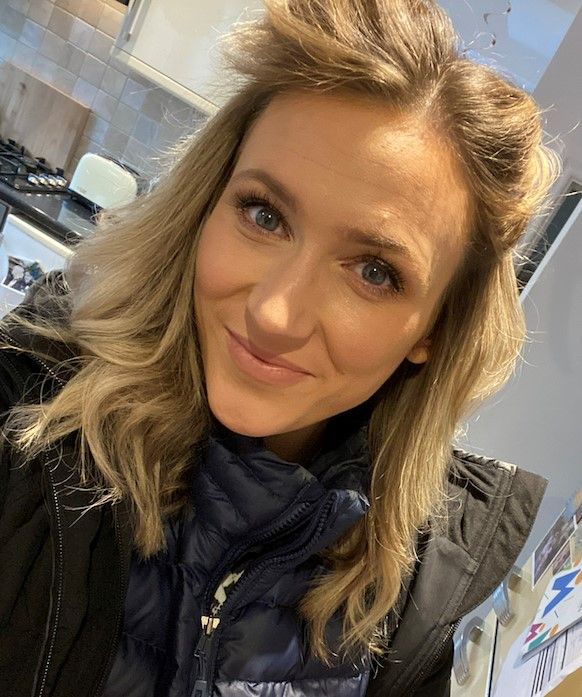Why Your Baby's Head Size Matters
)
Glancing over the paperwork I’d been given by the midwives, I could barely believe that I was a mum… I’d had a baby!
All the way through pregnancy, the thought that I was growing a human inside of me had felt so abstract, but now it was real. There he was filling the little white sleepsuit we’d bought for him all those months ago, with his perfectly chunky arms and plump little legs.
Written in black biro on a piece of card shaped like a teddy bear were my son’s measurements.
Weight: 8lb 8oz
Head Circumference: 38cm
“Head circumference??” I remember thinking, “I’d rather have known his length…”
Looking back, I feel a little bit silly that I had no idea why the size of a baby’s head matters, but actually - there’s hardly anything out there that tells expectant or new parents about why we should care.
I think we all know that weight and height can indicate healthy growth, but how many of us know that head circumference, when taken and plotted on a growth chart over weeks and months, can help to diagnose several serious brain conditions?
I certainly didn’t.
Rapid growth, or very slow growth of a baby’s head can indicate a problem that needs further investigation by a specialist. I think if we all understood that - we’d be keener to know that head circumference was being taken and recorded as part of the routine well-baby checks.
My Story
At 10-months-old my son was diagnosed with a condition called hydrocephalus. It’s also known as ‘water on the brain’ and affects around 1 in 770 babies. If you’re wondering how common that is, it’s about the same number of people that will be affected by Downs Syndrome.
When an infant has hydrocephalus, it means there’s a dangerous build-up of cerebrospinal fluid in the brain which can’t drain away by itself. It causes intercranial pressure in the skull and, if left untreated it, it can cause brain damage and be fatal.
One of the key symptoms is a rapidly growing head, but it often presents alongside several other symptoms including, but not limited to: vomiting, unsettledness, sleepiness, poor feeding, a shiny scalp with visible veins, eyes that gaze downwards, and a regression in the baby’s skills.
With my son, I just had a feeling that his symptoms weren’t pointing to a standard viral infection. Thanks to my dogged determination and despite being knocked back on multiple occasions by health professionals who dismissed my concerns; we were ultimately lucky to get a diagnosis in the nick of time, to avoid any significant brain damage.
My son underwent four brain surgeries in the space of six weeks.
There is no cure for hydrocephalus, but my son is kept alive by a device called a ‘shunt’ implanted inside his skull. It’s a small tube that drains the excess fluid from his brain and takes it to his abdominal cavity be reabsorbed. Shunts are amazing, but they can block – and when that happens it usually means another brain surgery to rectify the problem.
I hope my son will be one of the lucky ones who only needs a few revisions in his lifetime, but it’s not uncommon for children with hydrocephalus to endure many more surgeries than they’ve had birthdays. I’m aware of one young man who’s 11-years-old and has already undergone 27 brain surgeries.
In my day job, I’m a journalist. And after more than a decade of covering stories that happen in the lives of other people; I’ve now found myself at the centre of a story, working alongside Harry’s Hydrocephalus Awareness Trust on a campaign called GET-A-HEAD.
We want all new parents to know that head circumference is just as important as weight and height, so they have the knowledge to be the best advocates for their babies.
GET-A-HEAD is also calling for improved national guidelines for baby health care across England to end the post code lottery of support that is currently offered to families.

What do I need to know as a new parent?
Most babies born in the UK have heads that appear large when plotted on the World Health Organisation growth chart inside The Red Book. In fact, the average baby’s head will sit somewhere between the 75th-91st centiles.
It’s not necessarily about where your baby’s head measurement plots on the graph to begin with, it’s about monitoring head size over time for any sudden jumps up or down on the chart. It’s why it’s so important to make sure the measurement is taken initially by a midwife, so you have a baseline number to work from.
Most of you reading this will never have cause for concern when it comes to head circumference, but after what happened to me – I’m making it my mission to at least make you aware of why head circumference is taken, because it more than deserves the same focus as the other measurements.
For more information, please visit Harry’s Hydrocephalus Awareness Trust
Victoria Glover is a mum and North West Regional Correspondent Hits Radio. She is also a campaigner to raise awareness of paediatric hydrocephalus.
Twitter @victoriaaglover


